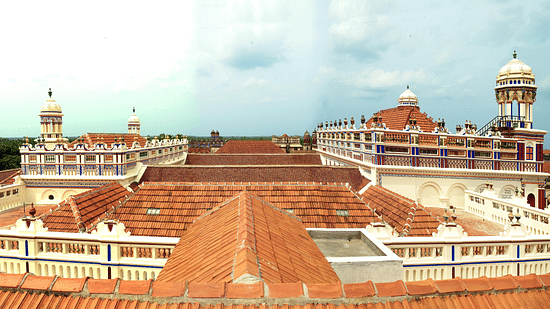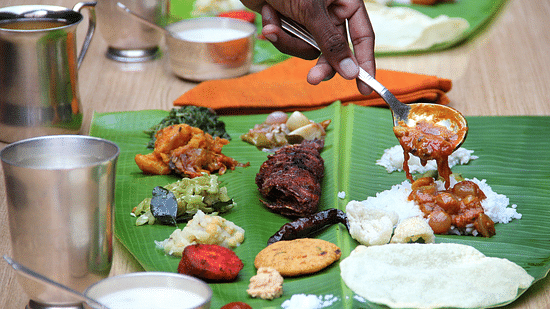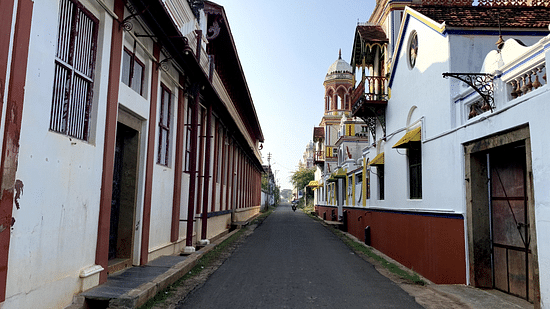


Chettinad Overview
About Chettinad
Chettinad is a region almost centrally located in the southern Indian state of Tamil Nadu. It’s a culturally and historically important region, famous for its unique cuisine, agriculture and architecture.
Ancient origins
The origin of Chettinad begins in the 13th century when the Nattukottai Chettiars migrated to Karaikudi. They left their previous area, the Cauvery Poompattinam, following a massive flood. The new settlement eventually became the Chettinad region (Land of the Chettiars) of 96 villages over a 600-1500 square mile area, out of which around 76 villages still exist today.
Powerful community
The story of the Chettiars is a fantastic one, spanning centuries, covering their growth from traders and merchants of salt, gems, textiles and jewelry to their entry into banking and finance in the 19th century.
Chettinad homes
The most endearing symbol of the Chettiar era has been the Chettinad homes. From cuisine, architecture, furniture and customs, the rich and well-travelled Chettiars evolved a unique style combining Western and Eastern sensibilities.
The town, arts and culture
Many aspects of Chettinad remain unchanged from decades ago, including the rice and paddy cultivation which is testament to the agricultural background of this region. Try on the Chettinad jewelry, which is a unique handmade art form that stands out even amongst the rich Indian jewelry styles, or visit local artisans and watch them hand craft the world famous Athangudi tiles which are glazed to perfection for luxury homes that try to recreate the Chettinad architecture.
Chettinad Temples
Originally built by early Tamil dynasties like the Cholas, the temples of Chettinad form the core of its culture. It is said that Nagarathars cannot do without constructing a temple wherever they reside. Numerous temples dot the Chettinad region, each with its own tank called oorani where water lilies are grown.
Ancient origins
There are several temples being unearthed at the original settlement of the Chettiars at Poompattinam, from where they migrated to the current Chettinad. Temple inscriptions carved on stone, plates of copper and leaf manuscripts are used to understand historical events.
The role of temples
The Chettiars (then known as Nagarathars) were invited to their current settlement by the king of the region at the time. Even the various clans within the Nagarathar community were identified as belonging to different Kovils (Temples). The association with each clan (and temple) decided the protocols for marriage within the community.
The nine temples or ‘Kovils’ are Illaiyathangudi, Mathoor, Vairavankoil, Nemamkoil, Illupaikudi, Surakuddi, Velangudi, Iraniyur and Pillaiyarpatti. As you travel through the region, expect to find temples at every turn, for religion is a central part of life in this region. Each temple has its own character. Some of the relics, even the ritual implements that you will find here are possibly hundreds of years old and priceless in value.
Chettinad Cuisine
World Famous Chettinad Cuisine
Of all the unique aspects of Chettinad, the most famous ambassador of this region has been its cuisine. Almost no restaurant in India serving non vegetarian food would miss out on having Chicken Chettinad on its menu and Chettinad cuisine is synonymous with spicy fare even to the Indian palate.
Popular dishes and vast menu
Popular Chettinad dishes include Pepper Chicken and Varuval. Dry snacks are very popular, including chips and fried dough in circular shapes called ‘Murukku’. Once again these are hand made in large quantities and go very well with the filter coffee famous in the region. Stuffed and steamed dishes like the kozhakattai are also part of this vast cuisine. A thick gravy version of curry called Kozhambu is made from coconut milk and spices as a base. Payasam is a famous dessert of liquid consistency that is flavored with nuts on a base of milk.
Influenced by the region, culture and travel
The Chettinad cuisine has been influenced by the nature of the region, which is a dry, arid and hot region. At the same time the Chettiars trace back their history to a life near the coastline, so their cuisine also has great seafood like prawns and crabs. The much travelled Chettiars also brought back many influences from abroad and their cuisine was also used while entertaining the British guests during the time of the Raj.
Chettinad Houses
Abode of Luxury
The Chettiar house was representative of the power and social standing of the merchant. As a result the house was influenced by luxurious products and design concepts from the multitude of Western and Asian cultures that the Chettiars were exposed to during their travels. The most iconic feature of Chettinad homes is the sheer scale of luxury and the mix of such a wide variety of aesthetic influences which come together to form one amalgamation and unique form of architecture.
Eclectic combinations
Chettinad houses boast of Italian tiles, Belgium glass, Rosewood carvings, Art Deco influences, Anglo-Indian cutlery, Victorian furniture, Burma teak, imported chandeliers, intricately carved iron grills, Gothic domes and arches.
Exclusive local elements
The house also featured distinctive local elements like painting, woodwork and tiles. Athangudi tiles or Chettinad tiles are sought after even today for luxury homes. These tiles were made by master craftsmen by hand and available in many colors. The painting of the house was done with a special mix that is unique to the region and had a recipe that involved eggs. The plaster is renowned for its quality and long lasting nature.
Opulent exteriors
The exterior of the house was grand and opulent and designed to impress the visitor. The use of organic paint of various colors adds to the unique style of Chettinad opulence. This grandeur carried over to the semipublic areas of the house where the guests were entertained. Ornate carvings lined key exterior spaces. The architecture imbibes a Western sense of scale with large windows, arches and tall ceilings, while merging that with a more intimate and personal traditional Indian style.
A palace of a house
A Chettinad ‘house’ is probably a palace elsewhere and is an understatement for these structures built over an area of 20,000 to 40,000 square feet. The entire extended family of the merchant used to stay together in these houses.